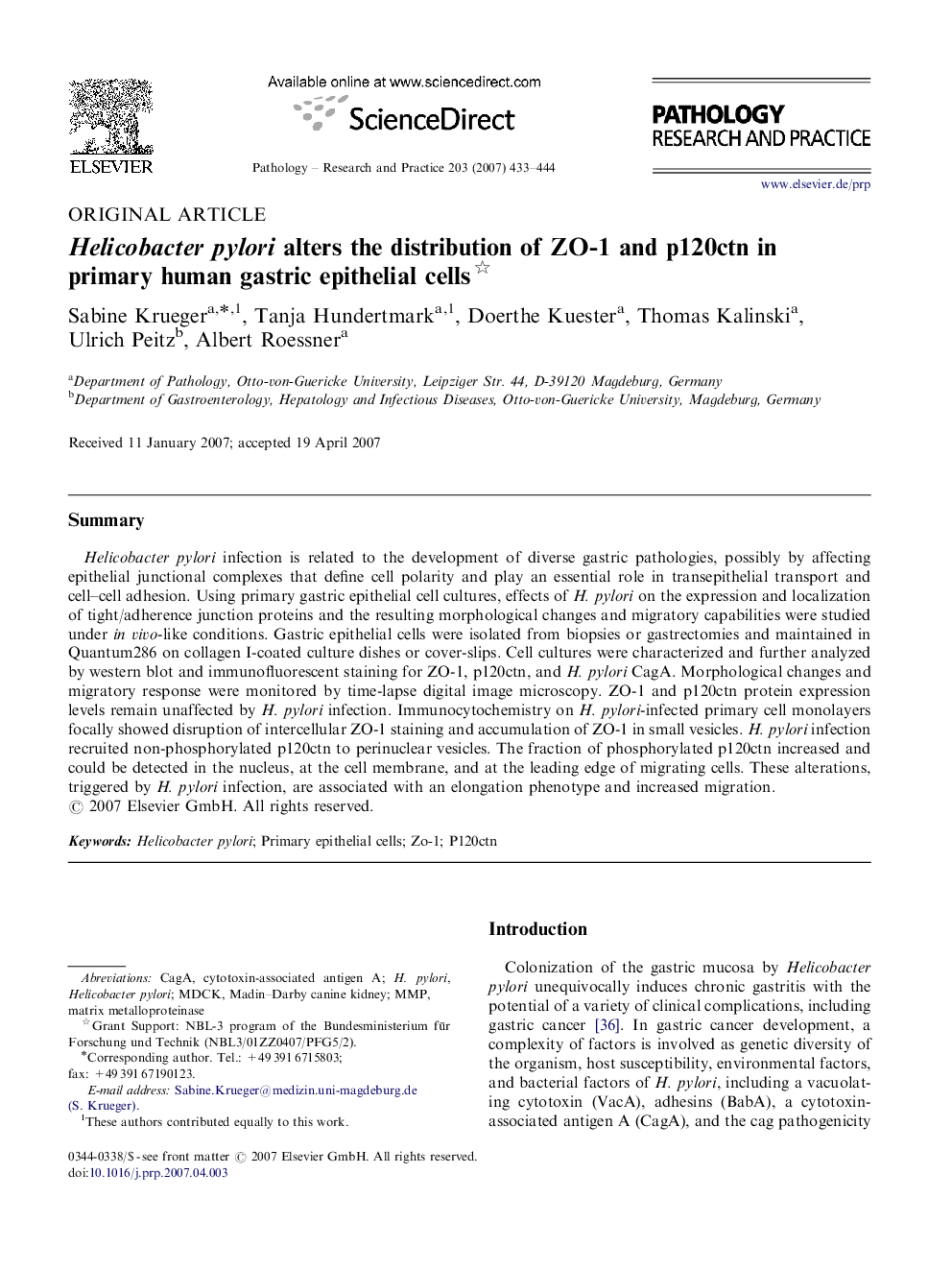| Article ID | Journal | Published Year | Pages | File Type |
|---|---|---|---|---|
| 2156863 | Pathology - Research and Practice | 2007 | 12 Pages |
SummaryHelicobacter pylori infection is related to the development of diverse gastric pathologies, possibly by affecting epithelial junctional complexes that define cell polarity and play an essential role in transepithelial transport and cell–cell adhesion. Using primary gastric epithelial cell cultures, effects of H. pylori on the expression and localization of tight/adherence junction proteins and the resulting morphological changes and migratory capabilities were studied under in vivo-like conditions. Gastric epithelial cells were isolated from biopsies or gastrectomies and maintained in Quantum286 on collagen I-coated culture dishes or cover-slips. Cell cultures were characterized and further analyzed by western blot and immunofluorescent staining for ZO-1, p120ctn, and H. pylori CagA. Morphological changes and migratory response were monitored by time-lapse digital image microscopy. ZO-1 and p120ctn protein expression levels remain unaffected by H. pylori infection. Immunocytochemistry on H. pylori-infected primary cell monolayers focally showed disruption of intercellular ZO-1 staining and accumulation of ZO-1 in small vesicles. H. pylori infection recruited non-phosphorylated p120ctn to perinuclear vesicles. The fraction of phosphorylated p120ctn increased and could be detected in the nucleus, at the cell membrane, and at the leading edge of migrating cells. These alterations, triggered by H. pylori infection, are associated with an elongation phenotype and increased migration.
